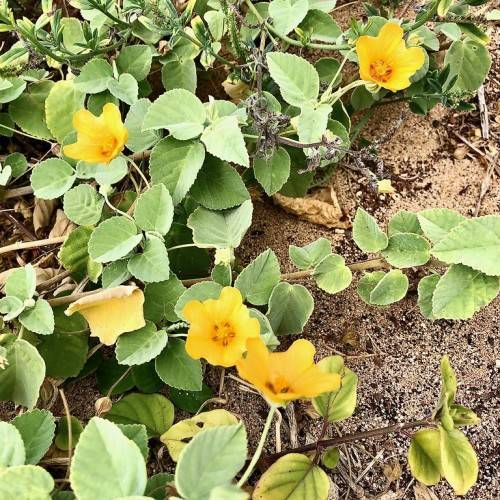
ilima
Sida fallax
Cycle:
Perennial
Watering:
Minimum
Hardiness Zone:
10 - 11
Flowers:
Flowers
Sun:
Full sun
Leaf:
Yes
Growth Rate:
Low
Maintenance:
Low
Drought Tolerant:
Yes
Salt Tolerant:
Yes
Care Level:
Medium
watering
Ilima (Sida fallax) should be watered every 3 to 5 days when the soil is dry. A thorough watering once a week should be enough to keep the plant healthy. During the hotter summer months, the plant should be watered more frequently, or more often in hotter climates. It is important to avoid overwatering as this can lead to root rot and plant death. Make sure that soil is draining water properly and never let the plant sit in a pool of water. For optimal growth, water with lukewarm water and avoid cold water. Additionally, the plant should be fertilized 3-4 times a year for optimal growth.
sunlight
Plants of the species Sida fallax, or ilima, will require full sunlight to thrive and bloom. The amount of sunlight required is approximately 6 to 8 hours of direct sunlight per day to reach the optimal level of growth and blooming. However, this species of plant is relatively tolerant to changes in light levels and can readily adjust. Ilima will do best when planted in direct sunlight during the peak hours of the day when the sun is at its highest, usually around 10 to 12 am and 4 to 6 pm depending on your location and time of year. During the summer months, plants should receive this sunlight as much as possible during the morning and afternoon. In winter months, as the sun sets earlier, ilima should receive the necessary amount of sunlight closer to the noon hour.
pruning
Ilima (Sida fallax) is best pruned in late winter or early spring to encourage new growth. For this plant species, only light pruning is necessary to maintain a neat, bushy shape. Prune out any dead, dying, or diseased branches during this time. It's also a good idea to prune out overcrowded branches or stems, to let more light and air reach the inner foliage. Prune the branches flush with the nearest bud, being careful not to over-prune. With light pruning, it is usually not necessary to use any sealant or protective material after pruning.
